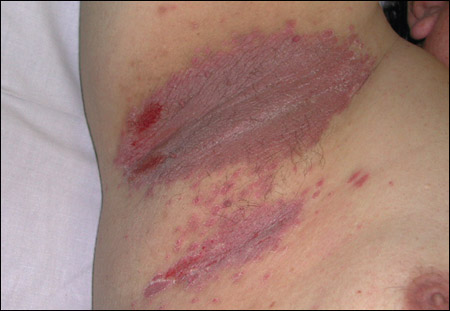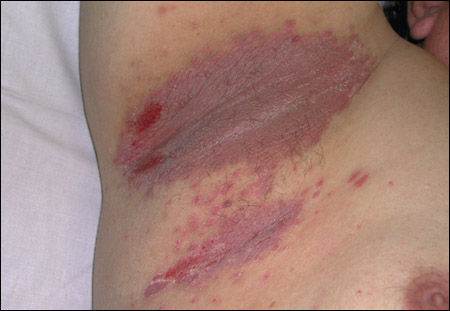> Gently cleanse skin with a pH-balanced no-rinse cleanser
> Pat or air dry skin. Do not rub.
> Place InterDry® Ag Textile between skin fold or under medical device.
> Allow at least 2 inches of textile exposed outside of skin fold or brace/ splint.
> Remove textile when bathing and replace when finished.
> Replace the textile in 5 days or sooner if it becomes soiled with urine or stool.
> Take steps to eliminate friction, heat, and maceration by keeping folds cool and dry.
> Use air conditioning and absorbent powders, wearing moisture-wicking polyester underwear and socks (eg, Orlon) and expose skin folds to the air.
> Compresses with Burow solution 1:40, dilute vinegar, or wet tea bags often are effective, especially if followed by fanning or cool blow-drying.
> Skin surfaces in deep folds can be kept separated with cotton or linen cloth; however, be sure to avoid tight, occlusive, or chafing clothing or dressings.
> Use a knitted polyester fabric that is impregnated with silver complex to wick sweat out of the skin folds and away from the body.
> When providing care for a patient (initial assessment, routine bathing, turning, dressing, or providing incontinence care), closely assess skin fold areas.
> Look for changes such as redness and moisture build-up.
> Open-toed shoes or sandals may help reduce toe web-space moisture.
> Use Antifungal and Immunosuppressant agents such as tacrolimus and pimecrolimus as ordered.
> Monitor patients closely for the development of striae or a hidden infection if topical steroids are needed to control an inflammatory intertrigo.
Sources:
https://www.rightdiagnosis.com/i/intertrigo/intro.htm
https://emedicine.medscape.com/article/1087691-medication








